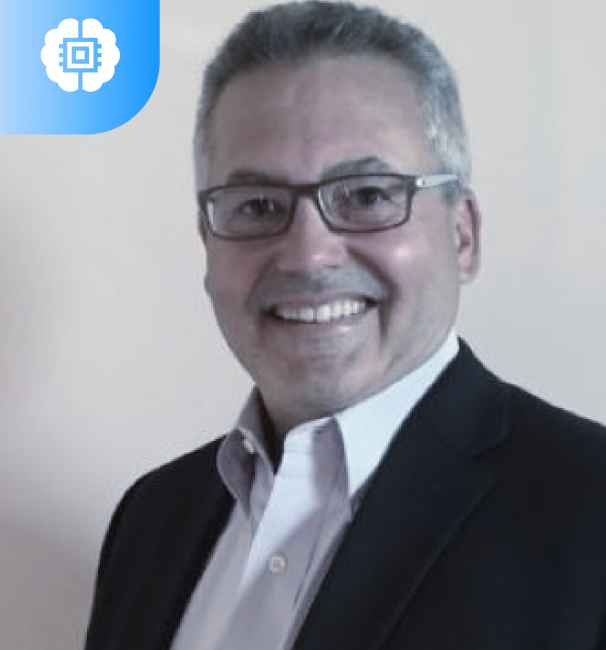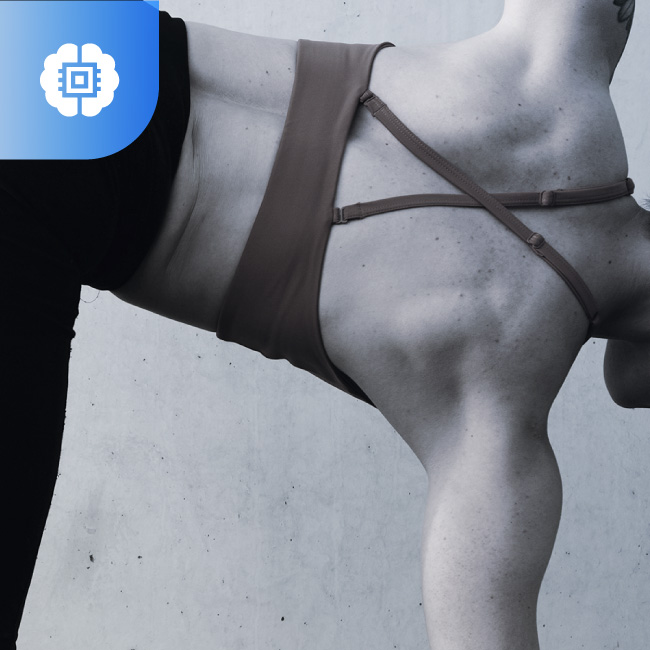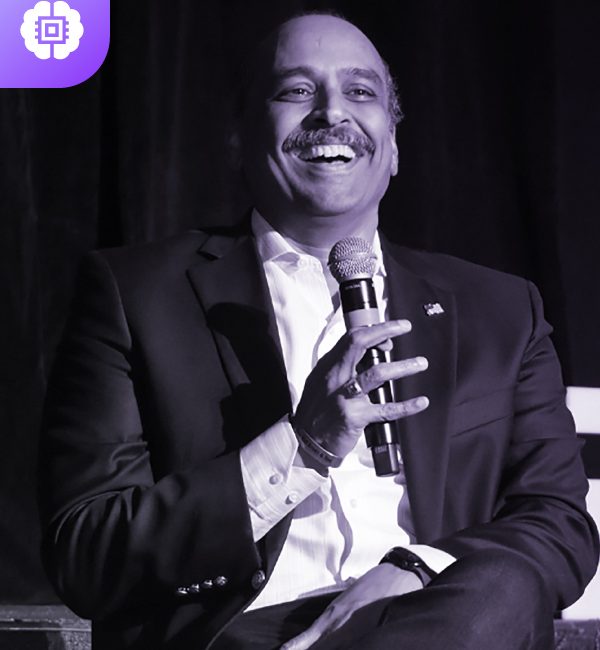
Go grocery shopping with a dash of data and AI. Kirk Ball, EVP & CIO, Giant Eagle, Inc gives a walk through.
Welcome to a brand new episode of the AI Transformation Podcast, CIO Diaries with Kirk Ball.
Our speaker today is Kirk Ball, the EVP & CIO of Giant Eagle. Kirk is a seasoned leader with over 30+ years of experience across industries. He is accustomed to managing multiple, large-scale projects and priorities in fast-paced environments.
In this episode, Kirk delves into how he has led AI transformation projects in large enterprises, how he uses data to fuel growth, Giant Eagle’s top tech priorities for 2023, and most importantly, actionable tips for enterprise leaders looking to drive change in large organizations.
Episode Transcript:
Hey there. Welcome to the AI Transformation podcast by Team Mad Street Den. I'm Shyam and I host this podcast with my founder, Ashwini Asokan, and we've been bringing together leaders from across the world CIOs, CEOs, digital transformation heads, CTOs, product and marketing leaders who've been crucial to transforming their businesses with AI. In this episode of the AI Transformation podcast, CIO Diaries, we're happy to welcome Kirk Ball, EVP and Chief Information Officer of Giant Eagle. Kirk is a talented executive IT professional, specialising in leading high-performing and multidisciplinary teams from solution architecture, and solution development through successful product launches. He is accustomed to managing multiple large-scale projects and priorities in fast-paced environments. Kirk has demonstrated a passion for an ability to drive innovation thinking across business and technology organizations. He consistently applies qualities of integrity, credibility and a passion for progress to strategic governance efforts. Over to you, Ashwini.
Ashwini AsokanAll right, Kirk. Wonderful having you here on our podcast. Thank you so much for joining us. This is our AI Transformation podcast series where we typically discuss some of the most pressing problems with change and transformation using AI with some of the leaders from around the world that are dealing with many, many questions of digital transformation and transformation in their relevant industries. Thank you so much for taking the time, Kirk.
Kirk BallThank you for the invite. So incredibly interesting topic and a lot obviously a lot of discussion going on around AI these days. So it's certainly something I think a lot of us are thinking about how do we apply those capabilities to the business challenges that we have. And so, yeah, I'm really excited to be here.
Ashwini AsokanKirk, I actually want to start off with a slightly bit of a personal note of sorts. Right. You've clearly been in this in this world of digital transformation for decades now. How many years precisely?
Kirk BallWell over 30.
Ashwini AsokanThere you go. Well over 30. And clearly a lot of miles across, many different types of organizations we noticed as well. What makes this whole journey of going from one large enterprise to another to bring in this scale of digital transformation, what makes what makes that whole thing meaningful for you? What is it about that journey that makes you tick?
Kirk BallYeah, like at the end of the dayI like to build stuff. I like to help companies build stuff, and I like to help teams build things. And, you know, clearly the application of digital capabilities is transformational for many, many companies and has been over the years. And so the opportunity to come in and apply, whether it's digital capabilities, AI capabilities and help that company grow in terms of its connection with its customers, its connection with its team members, take their goods and services to market in a more sophisticated way, in a more personalized way is it's a lot of fun to do, actually. So that's that's really to answer your question, that's how I would answer it.
Ashwini AsokanThat's wonderful. Think I love the fact that you led with build. Um, definitely seems like that's the theme there. The ability to build different types of things that bring about change. Particularly and correct me if I'm wrong here, but you did start your journey at Giant Eagle around the pandemic.
Kirk BallYeah, it started right as the pandemic was pretty much at its height. That was June 2020, and we had just previously made the decision to go all virtual and then solidified that decision right around the time that I joined. So we are a completely virtual enterprise sans those team members that are in store or in distribution center or drive trucks, etc., to move product. And they certainly are, you know, certainly incredibly important to the organization for those folks that could work virtual in the administrative space, we all work virtual. So, you know, part of my challenge was how do I connect with the organization that I was a part of? How do I connect with the organization that we are in service of how to build relationships with peers, how to understand the challenges that they're trying to overcome and address in their particular areas of responsibility. And then certainly how to create a transformational journey for the technology group. So we had, you know, we had a lot of very talented individuals. We didn't have a really good, solid, comprehensive technology roadmap and strategy. And honestly, we were in the midst of putting together and adjusting our business strategy, you know, as we were adapting to COVID. And so that was kind of the environment in which, you know, I stepped into and, you know, what was most important was to make sure that we were able to create a vision and a strategy that we could collaborate with. You know, we did that in a collaborative fashion with our business partners to understand where they want to go from a business perspective. And then correspondingly in parallel, we created a technology strategy that gave support and enabled where they were trying to go from a business perspective. So that was incredibly important. And then specifically back working with the technology group, it's a strategy. Then as we got direction from our business partners, it's a strategy that we created collaboratively. It wasn't my strategy, it was our strategy. And so, you know, it's a very good way to, first of all, leverage all the capabilities of the team and to to make sure that the team is in fully engaged in delivery and execution of that strategy because they own a part of it. And, you know, when people have ownership in something and they've had an opportunity to co-create and develop, they take the ownership very, very seriously as opposed to just having a strategy dictated to them. So yeah, that's how we did it and that's how we started. And we had a vision, we have a strategy, and then that allowed us to really communicate that consistently to help everybody understand where we were trying to go and what we're trying to do and why we're trying to do what we're trying to do for the business objectives and how what they do on a daily basis in the technology space really contributes to the success of the business. So that was significantly impactful in terms of continuing to mature our culture at Giant Eagle and the technology space, especially during a time when you couldn't, you know, spend time with people physically on a consistent basis. Right? So we do go into I do go into Pittsburgh, you know, once every 4 to 6 weeks. As a matter of fact, I'm leaving later this afternoon to go and spend 2 or 3 days with those that I work with directly. And we have many of our technology teams get together periodically at kind of a shared space that we have in Pittsburgh to connect on a regular basis. But yeah, that's we kind of blend that virtual with the ability to connect at a shared technology space on a regular basis. And that's really helped us stay connected. And but that vision, that that vision and strategy to rally around was really, really impactful.
Ashwini AsokanYou know, I think I've said this story to you many times, but as someone who had a significant, very impressionable kind of life in Pittsburgh by Carnegie Mellon and who's been a part of, you know, crews that were shopping at Giant Eagle, for me, I guess, you know, that experience was a very personal one, you know, as a grad student kind of taking that bus, going up to Giant Eagle, lugging all that stuff back. The whole experience, I would argue, was very personal, right? I mean, because it was a ritual. You did it as a as a as a student, as a grad student then. And coupons were all the rage and you had to make sure you had all the right coupons for all the right discounts and stuff that were, you know, put outside your door every day. The entire experience, if anything, was so physical, right? Like it was very offline print. And I'm talking 2002-03. Right. The entire experience was so physical at that point. And fast forward to anything post pandemic. It's all gone. Right? So, I would love a little bit about, you know, it's almost like two questions. But the first question is if you could tell us a little bit about the before and the after, like what's changed, right? What's acceptable, what's not acceptable, What changed in consumer behaviour and how did you respond to with the technology, right? And, the second part is what has stayed and what has gone back, right? I've been meeting a lot of companies lately across different industries who said, oh, we adopted all of this during the pandemic. But, you know, like three years in, we've kind of started going backwards, right, to some of the practices that we were doing pre-pandemic. And people are appreciative of it in some cases. And in some cases, people are just like, why would we change this? We've finally come up with something that's so convenient and people are used. So just two sides of that. What changed? What have you seen changed? And you know, what's what's stayed and what's not?
Kirk BallWell, certainly, you know, pre-pandemic and giant Eagle was no exception. Retail grocers and Giant Eagle, certainly. We're on that journey to offer an e-commerce experience to our customers, the ability to shop with us digitally, put items in a cart, have your order picked, and then come to store to pick up that order or have that order delivered to your home. The thing that the pandemic certainly did was it accelerated the scale and scope and the adoption of our customers adopting to or adapting to a new way of shopping with us. There were some customers that were very loyal digital customers and more customers that typically had shopped in store became certainly more familiar and exercised the ability to shop digitally with us due to their desire to not physically come into store. We had to increase the number of pickup slots that we had at stores for people that were picking up orders that they had bought online and that had been picked for them. And we expanded the number of stores to which people could buy digitally or online and pick up at stores. So it certainly accelerated the adoption, the experience of digital interaction with Giant Eagle significantly. And I think that's probably true for all grocers. You know, look, I think there's something to be said for an in-store experience, especially with perishables. But look, we found that there still are a significant number of customers now that once they have had the opportunity to experience the convenience of a digital experience with Giant Eagle, that they certainly continue to shop with us in that form. And that's their preferred form, not their only form, but their preferred form. The other thing that I'll say is look at post pandemic. You know, I think what was really important for us and we were on this journey prior to pandemic was to continue to drive a personalized interaction capability with customers, whether it be digitally, even if you shopped in store, the ability to get personalized offers, personalized coupons, personalized understanding of what is unique for you, and that we understand you, was certainly very, very important. And that has that continues to be important. So even for those customers that use a significant portion of our digital capabilities but still shop in store, the ability to understand that we understand you as a consumer and a shopper and a valued guest is incredibly important. And we continue to focus on personalization and continuing to drive that personalized, intimate connection with our our customers so that they understand that we are looking out for them, that we understand what's important for them. You know, the other thing that was important during the pandemic, you know, and I think maybe it was just a nice reinforcement. You got to really see how important the local grocery store, the local pharmacy within that grocery store, how important it was for the community to have a place to go and how important it was for them to be able to get their prescriptions, their over-the-counter medications, their food, and just how important the grocery store, the supermarket is to a community. You know, sometimes we take that for granted. But during the pandemic, it was really incredibly important that we were open, that we were taking care of folks from a digital perspective and that we were also taking care of our team members and folks in-store, making sure that they felt comfortable coming into the store. So, you know, that ability to reconnect with customers and have them really get re-energized about the importance of the supermarket and the pharmacy and the supermarket and the convenience stores, the fuel that we sell. It was a significant opportunity for us just to really deepen the relationship with our customers and then continue that relationship in a more intimate way with the continued growth of personalized capabilities.
Ashwini AsokanYeah, and I think you bring up such an important point. I feel like it feels like the story at the center of this in some ways, or the theme at the center of this in some ways is just trust, right? Think you're just constantly bringing that back as a theme here, right? Like whether it's people coming into the store, whether it's just serving as this community space and people just started. That's where people come and that's where people do stuff. And then to be able to continue that journey, I think digitally. Right. And accommodate whatever other touchpoints that you might have in an offline manner, but have to move it in a in a digital form. Um, that's really interesting that you're bringing up that notion of trust. And I feel like the grocery category in some ways makes that even more pronounced, right? The grocery, the pharmacy truly does make it the community kind of space, right? And I think I love the way that, that you describe that as almost like that little bit of a communal space that just allows people to come together where they can be taken care of for their most important family needs. I love the way you painted that. Have any of these habits kind of gone back to pre-pandemic stage, whether it's, whether it's the technology, whether it's the use cases, whether the application or just consumer behavior has anything rolled back or is most of it just kind of stayed?
Kirk BallThe technology is not going back. As a matter of fact, we continue to accelerate the drive to greater personalization. The drive to personalized offers. You know, as we as you come out of the pandemic and now you go to an extremely inflationary time, you know, we're doing things like putting in place a price lock on 800 items in stores across our company that are very, very important for our consumers. And we're doing that for a significant period of time. Can't remember the exact time, but it's months. And that price lock again, it's all about building trust. It's to help our consumers understand and our customers understand that we're trying to think like them, not for them, but like them. What are their needs? How can we help them with their needs? So putting these 800 items of price lock continuing to build that trust, to send them offers that are really relevant to them, not just any set of random offers, but but offers that are relevant to them and their tastes and their preferences, what their family likes. Look, do think you see people still want to have that convenience when they want it of being able to shop and interact with us from buying online and picking up in store. And we still have a greater number of customers doing that above and beyond what we necessarily did in pre-pandemic. Um, but certainly folks are back in store in a big way. They're shopping quite frequently, but they're also using that digital interaction, that capability to more effectively shop the store. Right? So think it's been I think it's been very, very good for us to continue to drive that personalization, continue to create an experience that whether you're shopping with us physically or whether you're shopping with us virtually or driving consistency in terms of offers, the ability for you to get the information that you need to interact with us in the ways in which you want to interact with us in the particular context of time that you're interacting with us.
Ashwini AsokanAnd where would you say you are in that journey? Right. Like just that that digital journey, because so much of this is, you know, find the right find the right, you know, set of applications on top, find the right. And that plumbing in some ways is is a never ending process. Right? You know, there's a vision. There's a strategy. You spoke about a roadmap. You spoke about all the applications and the ways in which you're reaching folks. But what would you say are some of the top, let's just say top three priorities as a first first question? And then just in terms of the process itself, right, like that, Um, is it, you know, because there's teams involved and there's the building of engineering teams, there's the process of buying, there's the process of maintaining. I'd love a bit of both, right? On one hand, just getting a sense of your top three priorities for, say, the next, I don't know, two years, right? And then the second part of it is looking through the lens of. Just what that that whole phrase of transformation, whether it's digital transformation, we call it transformation. Um, what is that process and who are the people involved, the processes, The tell us a little bit about how that's unfolding for you.
Kirk BallYeah. I'm going to take the I want to take the second question first and then we'll get to the top three challenges and you'll probably get a little bit of a sprinkle of that through to the answer on the second question. Look, I think from an AI perspective and a digital transformation perspective, I think it all starts with data and I think it starts with freshness of data. Meaning, you know, if I understand what you're buying habits were three years ago, that helps me understand or even a year ago, that helps me understand what you were buying a year ago. And I could see from years three through one, I could see how your tastes and preferences have changed. But it's also very important for me to have short loop data, meaning data that's very, very fresh. So you combine the ability to combine the short loop data with the long loop data, which is, you know, historical data that's a little bit older, maybe not as fresher to really understand customers preferences and where they're going, not only at the personalized level, but also at the macro level to make sure that we have the right products in the right stores at the right location at the right time. Those four attributes from a product perspective are incredibly important for our customers and understanding how our customers tastes and preferences are changing based upon the factors that they have pressing on them from a household perspective, whether it's changing number of children, whether it's kids moving out of the house now into college, whether it's, you know, significant inflationary pressure and changing the buying habits. We have to be able to understand where our customers are going. And our customers' preferences change very, very, very frequently. Not 100%. It's not a complete change for every customer, every time they interact with us. But there are subtle differences that change with each customer and each interaction, and being able to understand those is most important so that we can understand not only where the customer is at a given moment of time, but can we anticipate where that customer is going over the next 1 to 3 months or quarters? Right. And so we can make sure that we're able to see around the corner using data and using technology to be able to see around the corner and not just see in the past, but to see around the corner. And I believe that companies that are able to do that, regardless of industry that you're in, are going to be the companies that are going to win. So that's why this whole you know, that's why this whole story around AI and data is massively important. But what feeds AI? It's data, right? And so I think it's part of it starts out simultaneously wrangling. With your data, getting it cleansed, getting it categorized, getting it tagged, figuring out ways, Where are all the unique places that you can get data from.And whether it's internal or external sources to understand trends? Et cetera. I think that data is massively important. And then I think you have to have a pretty strong, you know, set of way to manipulate, manage that data, categorize that data, lay an analysis layer over top of that data, have people that are very sophisticated to work to layer algorithms over that data and to be able to tweak algorithms almost simultaneously and to have technology that's also tweaking those algorithms. You know, at some point, I think the the capability of humans to make real time game time decisions on thousands and thousands of products simultaneously based upon real time signals or signals about the future, you have to have technology now that's helping you make recommendations on prices, assortment categories that you should or shouldn't have, in what locations the right prices at the right time. So I think that's incredibly important.So hopefully that answers a little bit of your second question. Back to the first question. Uh, you know, certainly continued, uh, standing up, maturing our analytics capability, implementation of managing our data.Very, very effectively consuming. And gathering additional sets of data to give us additional introspection into the changing tastes and preferences. Deep personalization capabilities are very, very important to all retailers, right? We're all we're all we're all searching for that right answer. But finding that nice balance between communicating and connecting with the customer in a meaningful way. Doing it to some degree based upon their preferences. You know, how do they want to be integrated and interact with how how frequently do they want to be integrated or interacted with? How what are the right mechanisms for customer A to interact with them versus customer B? And that again is A that's another form of personalization. We've also got some significant back office work that we're doing, which doesn't sound very sexy, but it is it is also very, very important for us to make sure that we have back office and back end systems that can handle the volume and velocity of data and and can handle the transactions and volume of transactions as we grow to be able to support our business needs. So those are that's wonderful.
Ashwini AsokanIt almost at one point in your conversation I was like, Kirk, that's our company's pitch. Um, and it's, it's one of those things lovely to hear right Because it's it's especially with AI being all the rage right now and everybody wants to talk AI all the time. I mean, the reality is that so much of this is just the data wrangling. So much of this is just cleaning up the data and preparing it and making sure that everything is so robust that anything you do on top of it ends up being seamless. Right. And we love to say, you know, that we also love to be able to connect all these dots together. So instead of going out and having to work with 20 different companies that can do one solution each, it's important to make sure that everybody's tying into that same story and that same vision so that everything exists in that kind of flow of sorts. Right? And you have like one system in the middle that's able to envision this entire enterprise data as opposed to like just spending all your time dealing with all the all the all the ugliness of the data. And reality is we have a few more years to go before we stop having. We'll need to stop dealing with that. I think we're we're all still squarely in that space of dealing with what we call ugly.
Kirk BallSo it's lovely to just think about the volume and velocity of price changes from CPGs. Think about the volume and velocity of new products that are coming out. Think about the volume and velocity of products that are being deprecated or being, you know, they're stopping, they're stopping the production. You have to keep up with that. And those are the products and prices that you're offering to your customers online. So making sure that data is accurate, that you've got the right description attached to the right product, attached to the right image, attached to the right price, based upon your price and promotion optimization work that you're doing and being able to display that, whether that's in store or whether that's digitally and being able to display that and offer that effectively, that's incredibly important. That's the core of your business.
Ashwini AsokanExactly right. That's exactly right. And and it's so lovely to hear you say that. It's it really is. Because I think especially with very large organizations, Right. That are that are dealing with so many questions and so many problems that are coming at them at any given point in time. The question is always which what do you prioritize? Right. And sometimes the answer really is just clean your data. That's your number one thing, because everything else will fall in place if you just figure out how to deal with your data. Because any questions you're asking on top of that data, you're probably going to get very flawed answers to begin with. So you might as well just go back to being, you know. So it's lovely to hear that. Kirk, You know, we're running out of time here, so I want to get this last question in before we before we have to wrap, which is like three top pieces of advice for like people that are on this journey. Right? As someone who's been doing this over and over again and not just digital transformation, there's a whole lot of what you work with is AI centric, right? Whether it's like prediction based stuff, whether it's like the data that we were talking about.There's so much inventory based stuff, Pricing based stuff. Everybody is wrangling. And in fact in our event rebuild that we just did about a week ago. Um this was the top question like everybody's kind of struggling to answer. There are so many competing priorities, so many projects, so much data issues going around, so many bigger teams as well. Right. We're also beginning to see bigger and bigger and bigger teams in house. Right? People doing a variety of things. How do you deal with the complexity of this job? How do you deal with the complexity of this of this transformation? It's not a the fact that most CIOs are essentially CDTOs, right? They are chief digital transformation officers. That's an increasingly, we like to say at Maastricht and their chief, you know, transformation officers. Right. It's one thing to go out there and just, you know, build all these. It's another thing to make sure you're building the right thing at the right time with the right application, with the right team. Um, how do you deal with that complexity and like, what are the top 2 or 3 things that you can tell the listeners here who are mostly other people dealing with very similar questions?
Kirk BallYeah, that's a great question. And, you know, look. I work on this all the time with myself and my teammates that I work with. First and foremost, you know, macro level advice is take care of your team members and they'll take care of you and they'll take care of the company. Not one of us is smarter than all of us. And so leverage the power of the team. It's incredibly impactful and incredibly important. And it sounds so simple, but if you truly practice that every day. It's certainly revolutionary and it can it can change every time. You have to change the team, rise to the occasion. Second, you know would find the right external parties to partner up with and to help give you visibility to things that you can't see what's coming. How are people using tools in a very creative fashion that you may not have thought of? And how can they help guide your thinking and how can they partner with you to help put you in a position for success? And then last but not least, I think it's incredibly important to have a partnership with your business partners to understand what problems they're trying to solve and what are their priorities, and then how do you correspondingly structure a technology roadmap that supports the priorities that they're trying to deliver? And in doing that, you also get credibility with your business partners and you then get the right based upon the trust that you've built with them because you're trying to help them solve their problems. You get the right to influence their thinking and you get the right to help them understand the importance of particular things that you see and you hear from those third parties or what you read or services or, you know, like a Gartner or a Forrester that you use, your peers that you talk to. You get the right to influence their thinking because you have built the trust. They know you're there to help them be successful and help the company be successful. Those would be three things that I would offer up. And then based upon that, you know, that partnership, you get a sense of where and what are the right things to be working on to support your business partners.
Ashwini AsokanI love that. So basically the prioritization falls out of that. And I love that. I love that. Thank you so much, Kirk. I could go on. I have like at least like seven other questions. I think we will likely have to follow up those seven questions in the form of a blog, hopefully, or maybe a part two in another quarter or so. Thank you so much for taking the time to do this with us. We think these topics are at the core of what we believe is going to take for large enterprises to transform with AI and, you know, to have someone like you who's been there, done that, gone through that and is continuing to go through that, I'm sure this audience is going to be super thankful to have had the opportunity to kind of listen to this. So thank you.
Meet your speakers:

Kirk Ball
EVP & Chief Information Officer, Giant Eagle

Shyam Ravishankar
Manager - Digital & Content Marketing

Ashwini Asokan
Founder & CEO, Vue.ai







